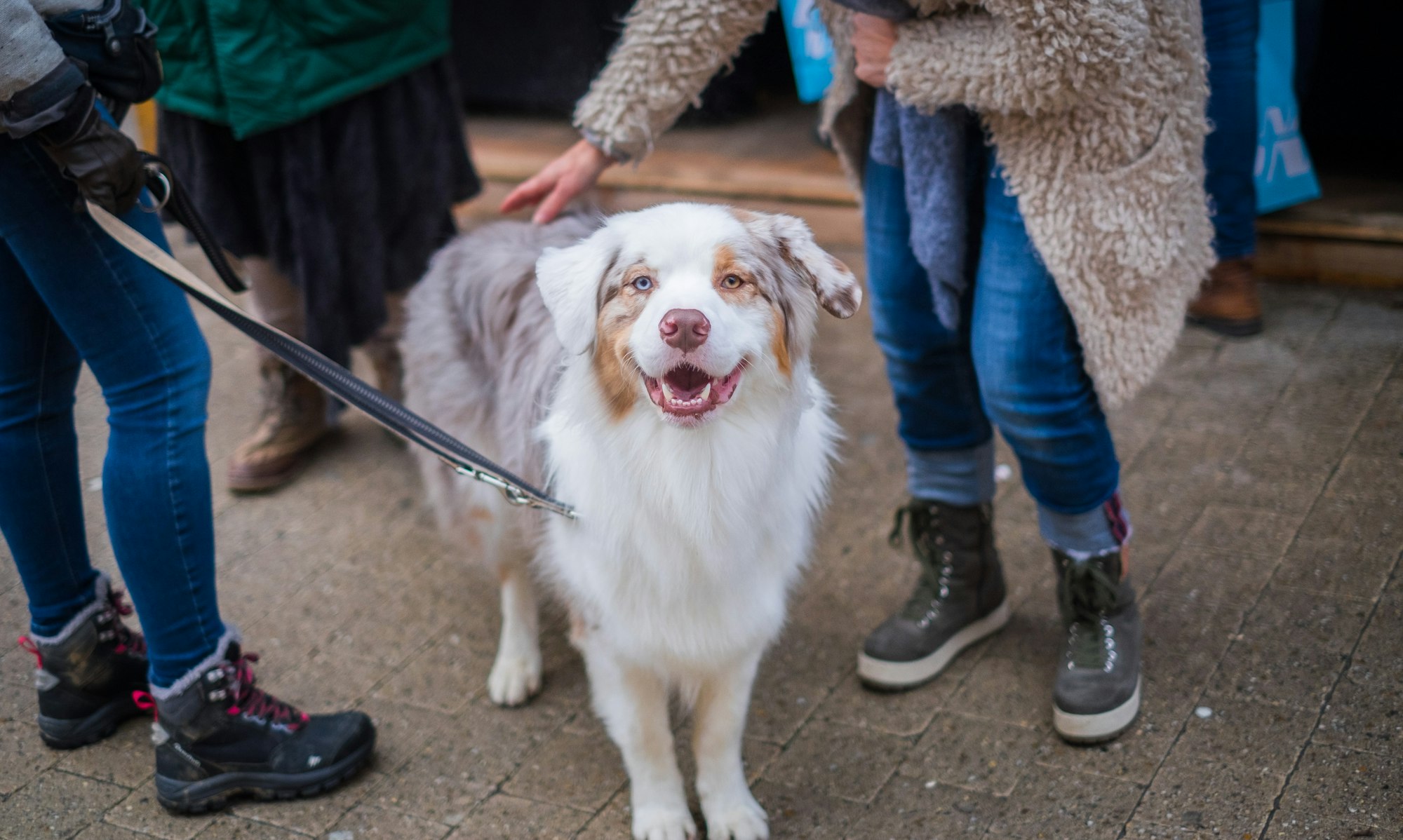Have you ever marveled at the stunning diversity in the colors of Labrador Retrievers?
If so, you're not alone. The Labrador Retriever, a beloved canine breed, boasts a range of hues that stretches from chocolate to silver. The fascinating world of Lab colors, steeped in chromatics and genetics, offers a riveting exploration into how these furry friends come to wear their unique coats.
The Spectrum of Lab Colors
Labradors come in three recognized breed-standard colors: black, chocolate, and yellow. The American Kennel Club (AKC) recognizes these three as the standard, but interestingly, there are other color variations like the "silver" Lab, which has sparked considerable debate among dog enthusiasts.

The Classic: Black Labs
The black Lab is the most common color for this breed. This isn't just a coincidence. The black color is a dominant gene, which makes it more common than the other colors. When a pup inherits the black gene from both parents, they will undoubtedly sport this handsome hue.
The Sweet: Chocolate Labs
Chocolate Labs, as the name suggests, display a rich, warm brown coat that often reminds people of delicious chocolate. The gene for the chocolate color is recessive, which means a puppy needs to inherit this gene from both parents to display the color.
The Bright: Yellow Labs
Yellow Labs range from a light cream color to a deeper fox red. The gene for yellow is also recessive. What's interesting about the yellow coloration is that it's not purely about the genetics of color. The yellow color also involves a gene that switches off the production of eumelanin, the pigment responsible for black and chocolate hues.
The Controversial: Silver Labs
Now, onto the more controversial variant - the silver Lab. Silver Labs have gained popularity over the last couple of decades, even though they are not officially recognized by the AKC. Their striking coat is similar to a diluted chocolate color, leading many to believe that the silver coat is due to a dilution gene affecting the chocolate color. There's been speculation that this unusual color may be the result of cross-breeding with Weimaraners, though this claim remains unverified.
Lab Color Genetics
Understanding the fascinating world of Lab color genetics is like unwrapping a biological mystery. It's all about the combination of genes a puppy inherits from its parents.
When it comes to Labs, the gene for black color is dominant, while genes for yellow and chocolate are recessive. This means that even if a puppy inherits a dominant black gene and a recessive chocolate gene, the dominant gene will overshadow the recessive one, and the puppy will be black.
For a puppy to be chocolate, it must inherit the chocolate gene from both parents. The same rule applies to the yellow color. If a Lab puppy inherits the recessive yellow gene from both parents, it'll have a yellow coat.
How Lab Colors Change
As puppies grow, they can undergo color changes, which can be quite surprising for their human companions. It's not uncommon for Labs to change colors as they age. A walk in the sun, for example, might reveal that your Lab's coat lightens or darkens in certain areas.
Their color can also fade as they get older, just like how human hair grays with age. A chocolate Lab puppy might have a dark chocolate coat that fades to a lighter chocolate color as they age.
A unique aspect of Labs is the 'ghosting' phenomenon. Ghosting refers to when older Labs develop a silver-grey hue around their mouths and sometimes on their feet. This is particularly noticeable in black and chocolate Labs.
Seasonal Shedding and Color Changes
Labradors also go through seasonal shedding. This process can lead to slight color changes in their coat. It's an entirely normal process and a sign of a healthy dog. If you notice this happening, rest assured, your Labrador is just going through the natural cycle of shedding and regrowth.

Potential Health Concerns Related to Color
The world of Lab colors also extends into their health. It's been suggested that different colored Labs may have different health concerns.
For instance, chocolate Labs have been found to have a higher incidence of ear infections. They also have a slightly shorter life expectancy compared to black and yellow Labs.
While it might sound surprising, even fleas seem to have color preferences. Research has shown that fleas are more attracted to dogs with darker coats. Therefore, your chocolate or black Lab might be at a slightly higher risk of attracting fleas than their yellow counterparts.
Lab Colors and Personality Traits
There's a common belief that the color of a Lab's coat has a direct impact on their temperament. However, it's important to remember that this is largely anecdotal and not backed by scientific evidence.
Yet, it's interesting to note that some people believe that yellow Labs are more laid-back, black Labs are excellent workers, and chocolate Labs are more playful. Again, these are generalizations and not scientifically proven.
Labradors and Water
Interestingly, a Lab's love for water has a historical link to their coat color. Labrador Retrievers were initially bred as fishing dogs in Newfoundland, where they would retrieve fish and nets from the water. Their waterproof coat, which is denser than many other dog breeds, helped them stay warm in the icy waters.
While the coat color doesn't impact a Lab's love for water, it's fascinating to understand how their historical purpose aligns with their physical attributes.
Lab Colors and Therapy Work
The Lab's endearing personality and trainability have made them excellent therapy dogs. They are frequently used as seeing-eye dogs, search and rescue dogs, and therapy dogs in hospitals and schools.
While the dog's color doesn't influence its ability to do therapy work, certain institutions might have preferences. For example, some believe that lighter-colored dogs shed less visibly on clothes and furniture, so they might prefer yellow Labs for indoor therapy work.

Labradors: A Remarkable Rainbow
From coat changes influenced by age and season to the surprising connection between color and health, the world of Lab colors is intriguing. Whether your Labrador is a classic black, a sweet chocolate, a bright yellow, or a rare silver, one thing's for sure: they all possess the heart-warming charm that makes Labs one of the most beloved breeds around the globe.
Finally, remember that while these color variations are fascinating, they don't define your pet. It's important to love and care for your furry friend regardless of their color. After all, it's their loyal companionship, boundless energy, and unconditional love that truly make them man's best friend.
Brachycephalic Syndrome and Lab Colors
Although the Labrador Retriever isn't typically considered a brachycephalic breed, it's worth mentioning brachycephalic syndrome in the broader context of dog health. This term refers to a set of upper airway abnormalities often seen in short-nosed, flat-faced dogs like Bulldogs and Pugs.
While this syndrome isn't directly related to a Lab's color, it's essential for dog owners to be aware of the potential health issues that can affect different breeds. Understanding health concerns across breeds is crucial in advocating for the overall well-being of our furry friends.
Lab Colors: What Does the Future Hold?
As we delve further into the future, what might we expect in the world of Lab colors? With ongoing advancements in canine genetics, our understanding of the mechanisms behind these color variations continues to evolve.
One area that researchers are exploring is the possibility of more color variations. Just as the silver Lab has emerged over the past decades, might we see other unique shades in the future? Only time will tell.
Introducing Fi Dog Collars: A High-Tech Tool for Your Colorful Companion
As we navigate the vibrant world of Lab colors, there's one essential accessory that can cater to any color of Labrador: the Fi dog collar. This high-tech device is the perfect addition to your Labrador's lifestyle, whether they're black, chocolate, yellow, or silver.
Fi Dog Collars and Lab Color Genetics
Understanding your Lab's color genetics is fascinating. But just as vital is keeping them safe and sound. The Fi dog collar can be a game-changer here. Equipped with GPS tracking, this collar allows you to keep an eye on your Lab's location in real-time.
Whether your chocolate Lab has decided to go on an adventure during a walk or your silver Lab has taken a water-loving detour to the nearest pond, the Fi collar helps ensure you can locate your four-legged explorer easily.
Seasonal Shedding and Fi Collars
During their seasonal shedding, Labs can leave quite a bit of their coat just about everywhere. While you can't prevent the shedding, a Fi collar can offer a unique advantage. Its durable build ensures it stays secure, no matter how much your Lab may scratch or shed.
With the Fi collar, you can spend less time worrying about lost collars and more time marveling at your Lab's ever-changing coat.
Fi Collars and Health Concerns
When it comes to potential health concerns, the Fi collar offers an additional layer of support. This smart device monitors your Lab's daily steps, providing valuable insights into their activity levels.
If your chocolate Lab is prone to ear infections or if your black Lab is dealing with a flea problem, their activity might decrease. The Fi collar helps you keep track of these changes, allowing you to catch any potential health issues early.
Fi Collars for Therapy Labs
For Labs involved in therapy work, Fi collars can provide added peace of mind. Since these Labs often work in public spaces and assist different individuals, it's crucial to know they're safe and close by. The real-time GPS tracking of the Fi collar helps ensure that therapy Labs stay in the vicinity and continue to provide their invaluable support.
Fi Collars: A Rainbow of Choices
Just like the remarkable rainbow of Labrador colors, Fi dog collars come in a variety of hues. From sleek black to bright yellow, there's a Fi collar for every Labrador personality. The colors can even be matched with your Labrador's coat, adding a fun and functional way to celebrate your Lab's unique color.
The Future of Fi Collars
As our understanding of Labrador colors continues to evolve, so does the technology we use with our pets. With continuous updates and improvements, Fi collars are leading the way in pet technology, ensuring our colorful companions stay safe, healthy, and by our side.
Conclusion:
In the colorful tapestry of Labrador Retrievers, each shade from chocolate to silver, tells a story woven with genetics, health implications, and myths. Their vibrant coats undergo transformations through growth, seasonal shedding, and the sun's kiss.
Despite color-associated health differences and public perceptions, every Lab, whether classic black, sweet chocolate, bright yellow, or controversial silver, holds the promise of a loyal and spirited companion. Their historical love for water, innate therapeutic potential, and proneness to conditions like fleas or brachycephalic syndrome, are part of the whole Labrador picture.
These colorful companions are further complemented by Fi dog collars. These collars, using advanced technology, safeguard our Labs, track their activity, and come in colors to match their unique coats. Thus, in our journey through the fascinating world of Lab colors, we appreciate the science, celebrate the variety, and equip ourselves to ensure their well-being.